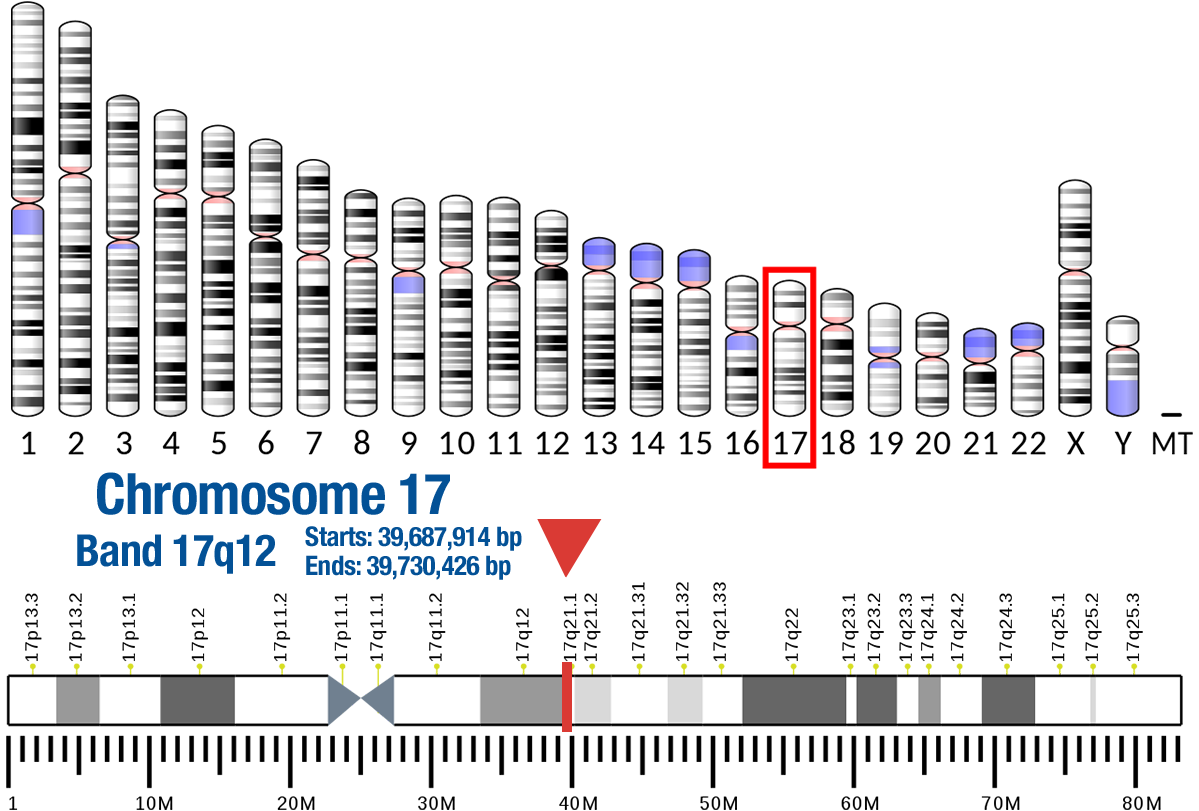
This gene encodes a member of the epidermal growth factor (EGF) receptor family of receptor tyrosine kinases. This protein has no ligand binding domain of its own and therefore cannot bind growth factors. However, it does bind tightly to other ligand-bound EGF receptor family members to form a heterodimer, stabilizing ligand binding and enhancing kinase-mediated activation of downstream signalling pathways, such as those involving mitogen-activated protein kinase and phosphatidylinositol-3 kinase. Allelic variations at amino acid positions 654 and 655 of isoform a (positions 624 and 625 of isoform b) have been reported, with the most common allele, Ile654/Ile655, shown here. Amplification and/or overexpression of this gene has been reported in numerous cancers, including breast and ovarian tumors. Alternative splicing results in several additional transcript variants, some encoding different isoforms and others that have not been fully characterized. [provided by RefSeq, Jul 2008]
- Nucleotide binding
- Enables RNA polymerase I core binding
- Protein kinase activity
- Enables protein serine/threonine/tyrosine kinase activity
- Enables protein tyrosine kinase activity
- Located in nucleus
- Cytoplasm
- Endosome
- Located in early endosome
- Located in cytosol
- Involved in positive regulation of protein phosphorylation
- Involved in protein phosphorylation
- Involved in signal transduction
- Acts upstream of or within cell surface receptor signaling pathway
- Involved in enzyme linked receptor protein signaling pathway
Protein tyrosine kinase that is part of several cell surface receptor complexes, but that apparently needs a coreceptor for ligand binding. Essential component of a neuregulin-receptor complex, although neuregulins do not interact with it alone. GP30 is a potential ligand for this receptor. Regulates outgrowth and stabilization of peripheral microtubules (MTs). Upon ERBB2 activation, the MEMO1-RHOA-DIAPH1 signaling pathway elicits the phosphorylation and thus the inhibition of GSK3B at cell membrane. This prevents the phosphorylation of APC and CLASP2, allowing its association with the cell membrane. In turn, membrane-bound APC allows the localization of MACF1 to the cell membrane, which is required for microtubule capture and stabilization. ERBB2_HUMAN,P04626
- Visceral Neuropathy, Familial, 2, Autosomal Recessive
- Glioma Susceptibility 1
- Ovarian Cancer
- Lung Cancer
- Gastric Cancer
- Lung Cancer Susceptibility 3
- Hirschsprung Disease 1
- Breast Cancer
- Colorectal Cancer
- Mammary Paget’S Disease
- Breast Fibroadenoma
- Pancreatic Adenocarcinoma
- Ovary Adenocarcinoma
- Breast Ductal Carcinoma
- Uterine Carcinosarcoma
- Breast Carcinoma In Situ
- Adenocarcinoma
- Gastroesophageal Adenocarcinoma
- Gastric Adenocarcinoma
- Gastroesophageal Junction Adenocarcinoma
- Female Breast Cancer
- Breast Disease
- Skin Melanoma
ERBB2 Localizations – Subcellular Localization Database
This gene encodes a member of the epidermal growth factor (EGF) receptor family of receptor tyrosine kinases. This protein has no ligand binding domain of its own and therefore cannot bind growth factors. However, it does bind tightly to other ligand-bound EGF receptor family members to form a heterodimer, stabilizing ligand binding and enhancing kinase-mediated activation of downstream signalling pathways, such as those involving mitogen-activated protein kinase and phosphatidylinositol-3 kinase. Allelic variations at amino acid positions 654 and 655 of isoform a (positions 624 and 625 of isoform b) have been reported, with the most common allele, Ile654/Ile655, shown here. Amplification and/or overexpression of this gene has been reported in numerous cancers, including breast and ovarian tumors. Alternative splicing results in several additional transcript variants, some encoding different isoforms and others that have not been fully characterized. [provided by RefSeq, Jul 2008]
- Nucleotide binding
- Enables RNA polymerase I core binding
- Protein kinase activity
- Enables protein serine/threonine/tyrosine kinase activity
- Enables protein tyrosine kinase activity
- Located in nucleus
- Cytoplasm
- Endosome
- Located in early endosome
- Located in cytosol
- Involved in positive regulation of protein phosphorylation
- Involved in protein phosphorylation
- Involved in signal transduction
- Acts upstream of or within cell surface receptor signaling pathway
- Involved in enzyme linked receptor protein signaling pathway
Protein tyrosine kinase that is part of several cell surface receptor complexes, but that apparently needs a coreceptor for ligand binding. Essential component of a neuregulin-receptor complex, although neuregulins do not interact with it alone. GP30 is a potential ligand for this receptor. Regulates outgrowth and stabilization of peripheral microtubules (MTs). Upon ERBB2 activation, the MEMO1-RHOA-DIAPH1 signaling pathway elicits the phosphorylation and thus the inhibition of GSK3B at cell membrane. This prevents the phosphorylation of APC and CLASP2, allowing its association with the cell membrane. In turn, membrane-bound APC allows the localization of MACF1 to the cell membrane, which is required for microtubule capture and stabilization. ERBB2_HUMAN,P04626
- Visceral Neuropathy, Familial, 2, Autosomal Recessive
- Glioma Susceptibility 1
- Ovarian Cancer
- Lung Cancer
- Gastric Cancer
- Lung Cancer Susceptibility 3
- Hirschsprung Disease 1
- Breast Cancer
- Colorectal Cancer
- Mammary Paget’S Disease
- Breast Fibroadenoma
- Pancreatic Adenocarcinoma
- Ovary Adenocarcinoma
- Breast Ductal Carcinoma
- Uterine Carcinosarcoma
- Breast Carcinoma In Situ
- Adenocarcinoma
- Gastroesophageal Adenocarcinoma
- Gastric Adenocarcinoma
- Gastroesophageal Junction Adenocarcinoma
- Female Breast Cancer
- Breast Disease
- Skin Melanoma
ERBB2 Localizations – Subcellular Localization Database

Ribbon diagram of the Fab fragment of trastuzumab, a monoclonal antibody, bound to the extracellular domain of HER2. Created using Accelrys DS Visualizer Pro 1.6 and GIMP.
Gene Location


